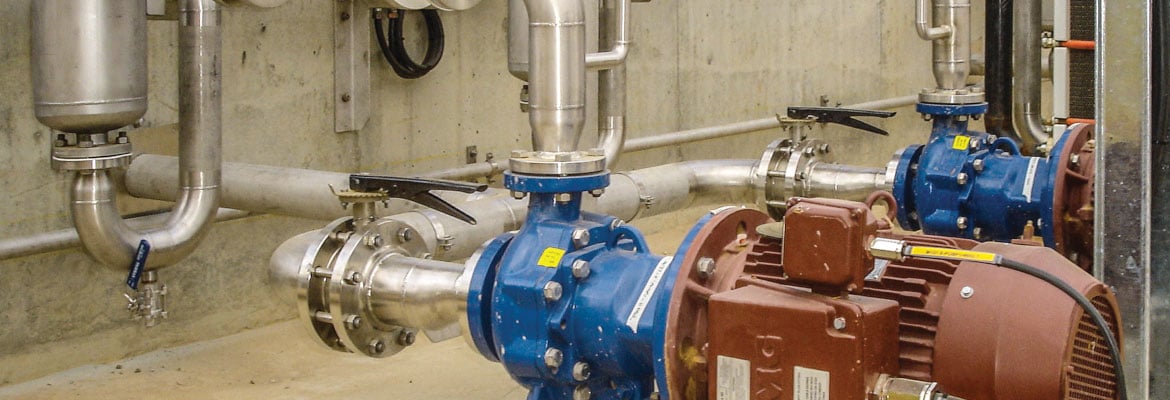In some applications, a single pump may not be suitable for the site’s requirements. Did you know it is possible to install pumps either in series or parallel to increase the flow rate or increase the head pressure?
Our team share their knowledge on setting up and operating a pump in series or parallel.

Running centrifugal pumps in series in high head / low flow applications
So, you have high head, low flow requirements?
When you set up your centrifugal pumps in a series, or connect them along a single line, you can add the head from each pump together to meet the high head, low flow requirements of your application. This combination of high head and low flow is achieved as the fluid pressure increases, so does the flow that passes from each pump - much like how a multi-stage pump works.
Running centrifugal pumps in a series for constant, high pressure applications
So, you need high, constant pressure?
Where you require high, constant pressure, Global Pumps suggest adding a speed control to the final pump in the series. This configuration allows you to keep a low flow, as the fixed-speed pump feeds into the speed-controlled pump, adjusting the output pressure to add only enough pressure to maintain the required pressure.
Running pumps in parallel for low head / high flow, or low head / varied flow applications
Putting your pumps in parallel or connected to several line branches, so each pump handles a division of the flow, will allow you to achieve a low head, high flow operating pump set. This set up can not be achieved with a single pump.
The combined curve for parallel pumps is created by adding the flow capacities of each pump. Two of the same pumps will result in double the flow, while two different pumps will result in the addition of the flows.
Runnings your pumps in parallel with control, with low head / varied flow applications
So, you are after a low head or varied flow?
If you want variable flow, or more importantly, high efficiency, you might want to consider a speed control to each pump. Not only does this achieve good performance, but it allows you to operate these pumps closer to their best efficiency point (BEP).
In this configuration, two scenarios can occur:
- One pump fully runs while the others add flow as required, or;
- Both pumps can run at a reduced speed and adjust as required
If you are running your pump at full speed, this causes it to move beyond the BEP, which lowers the efficiency and causes potential problems. Where two controlled pumps that operate at partial capacity, the operator can still control the flow while running each pump closer, or to the left of the BEP. This ensures your pump is running much more efficiently.
This configuration offers a wide range of operating conditions and enhances the efficiency of your pumping systems.
Want more information on selecting pumps, or operating pumps in a series or parallel? Give Global Pumps a call. Our team can advise of best practice for your specific application. Whether it be a single or multiple pump series, you’re in safe hands with Global Pumps. Get in touch today!

